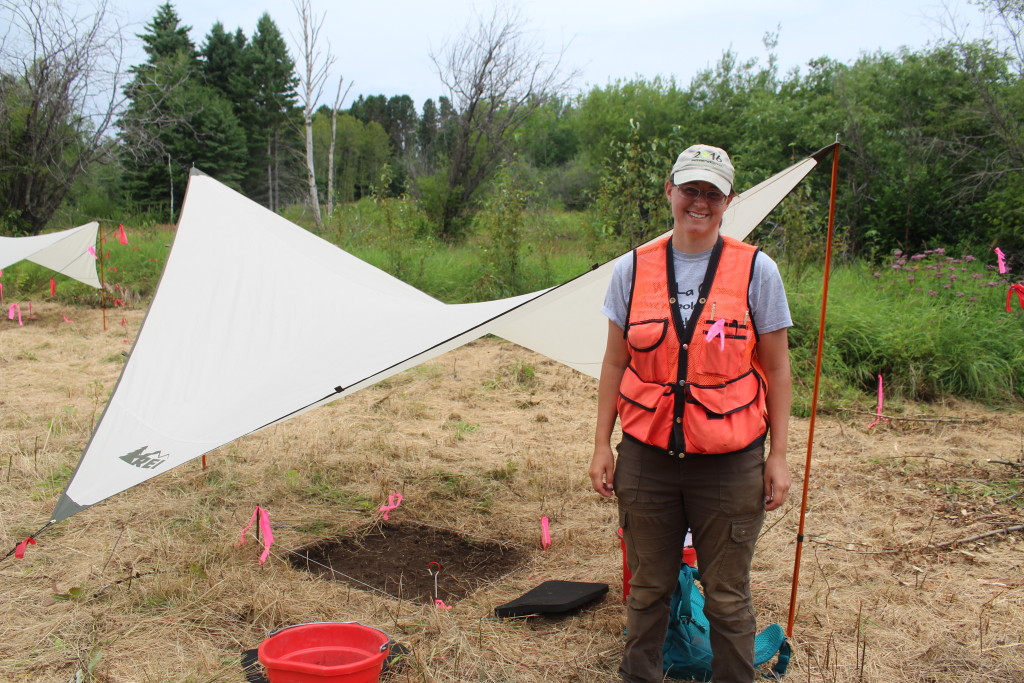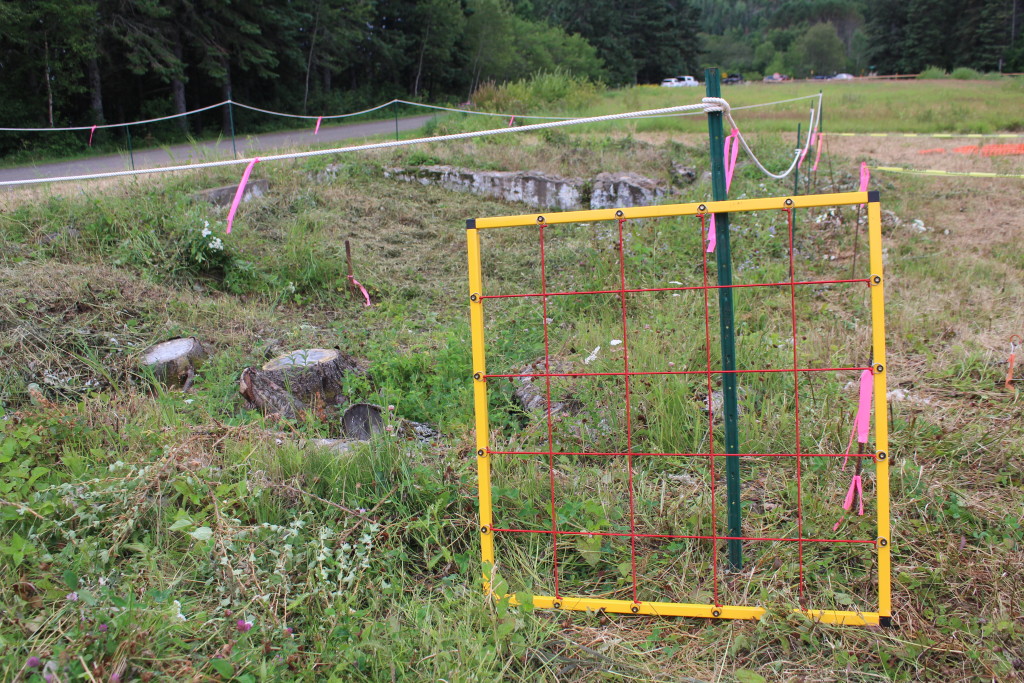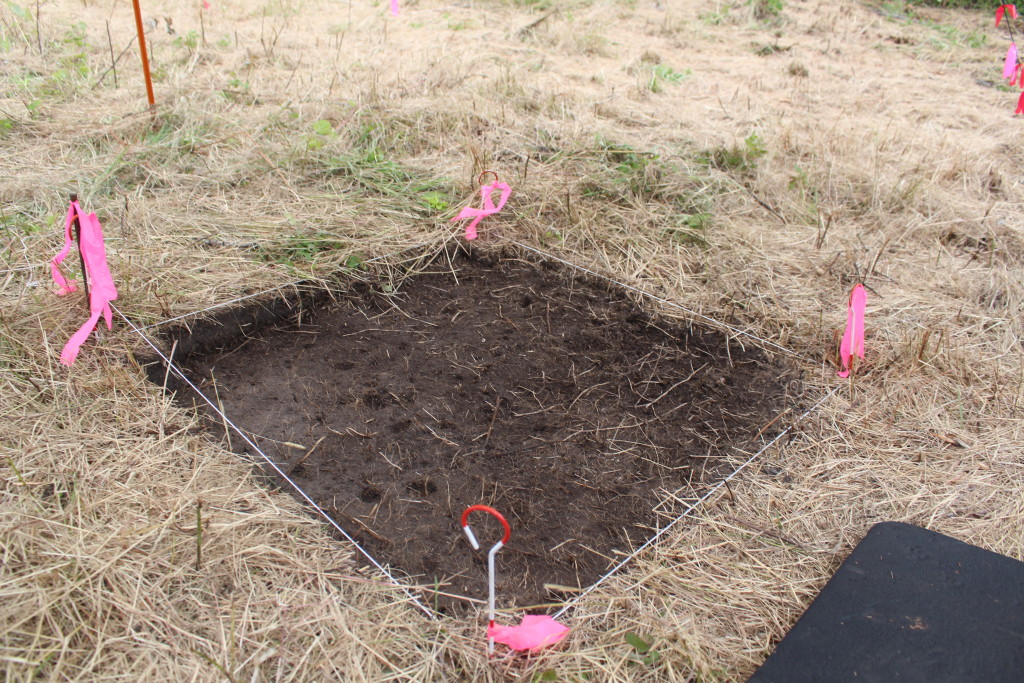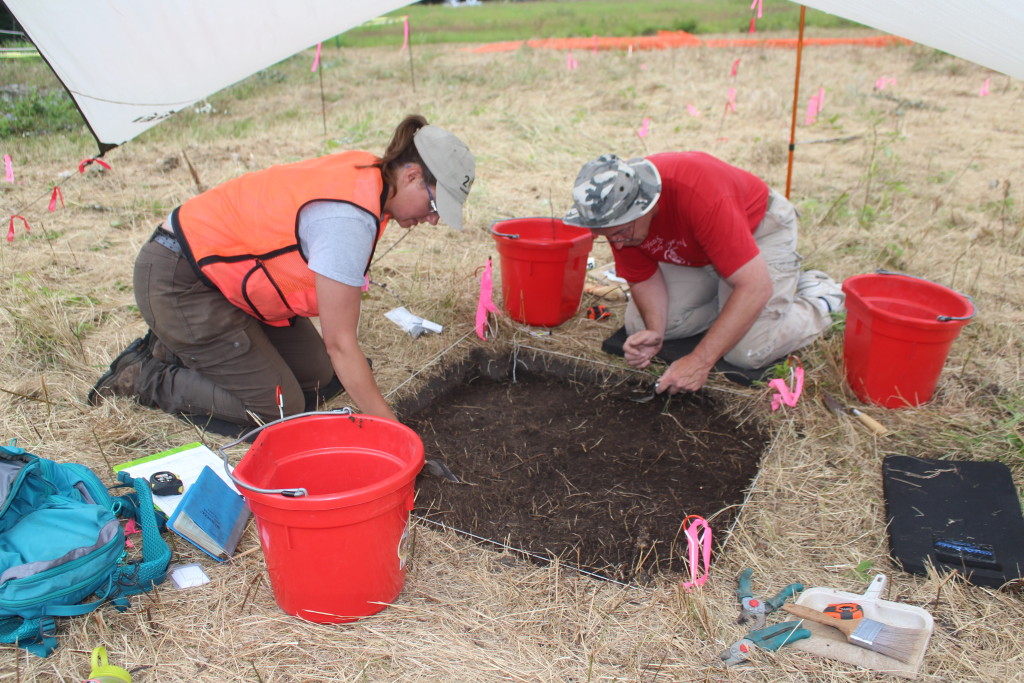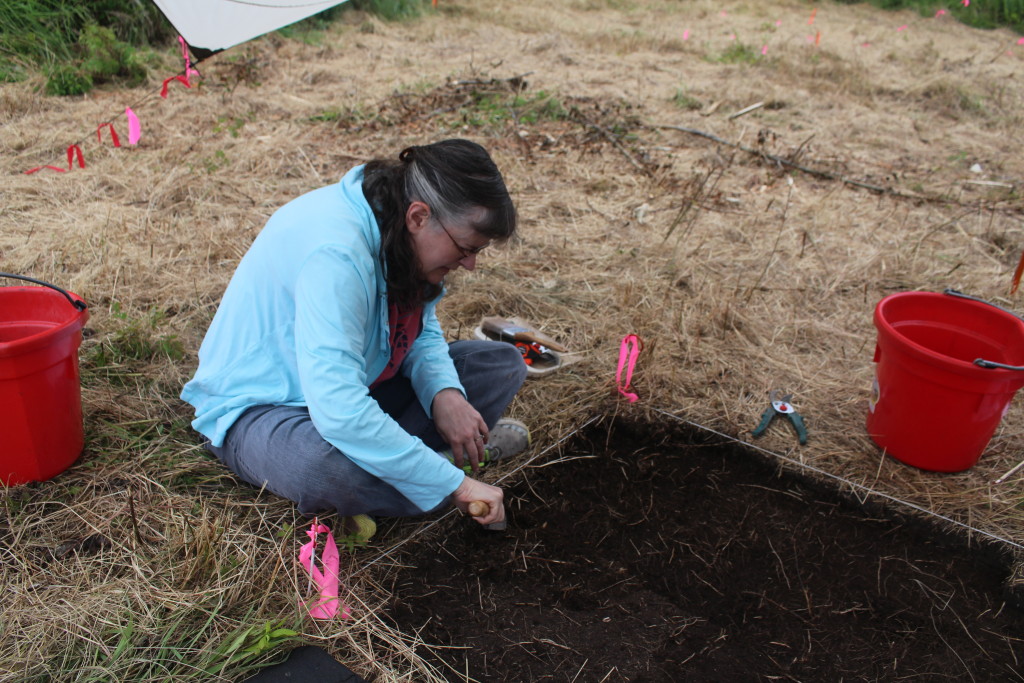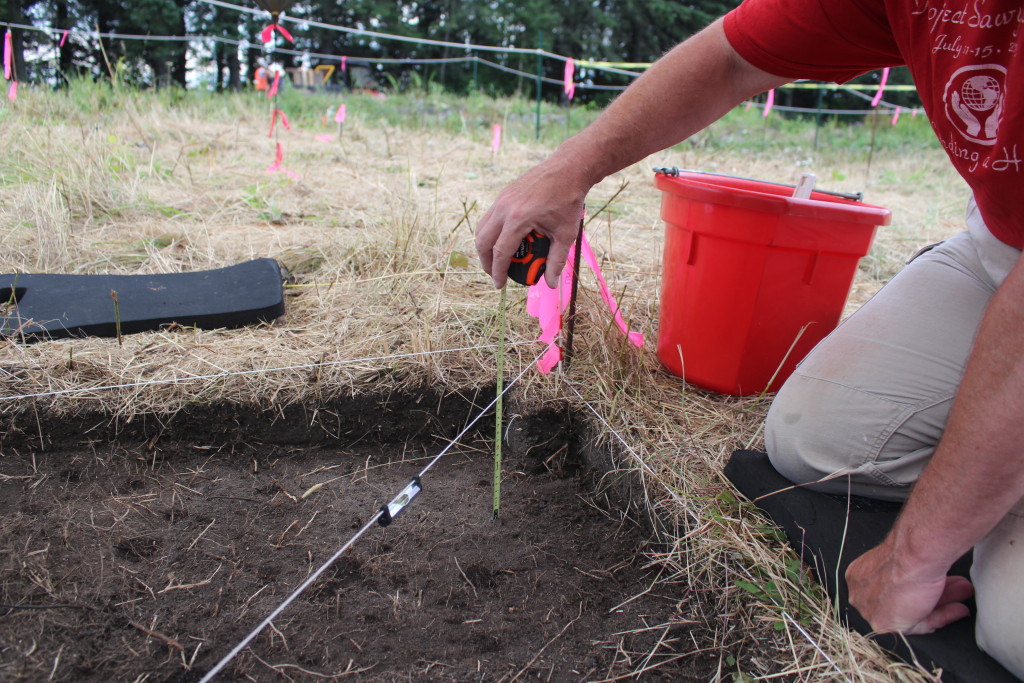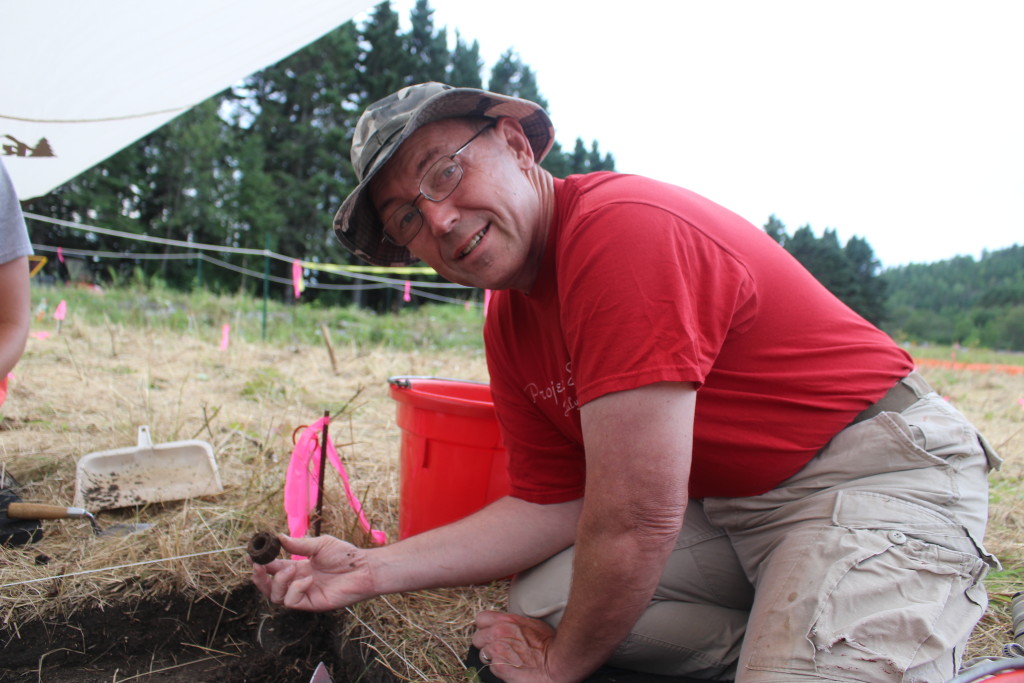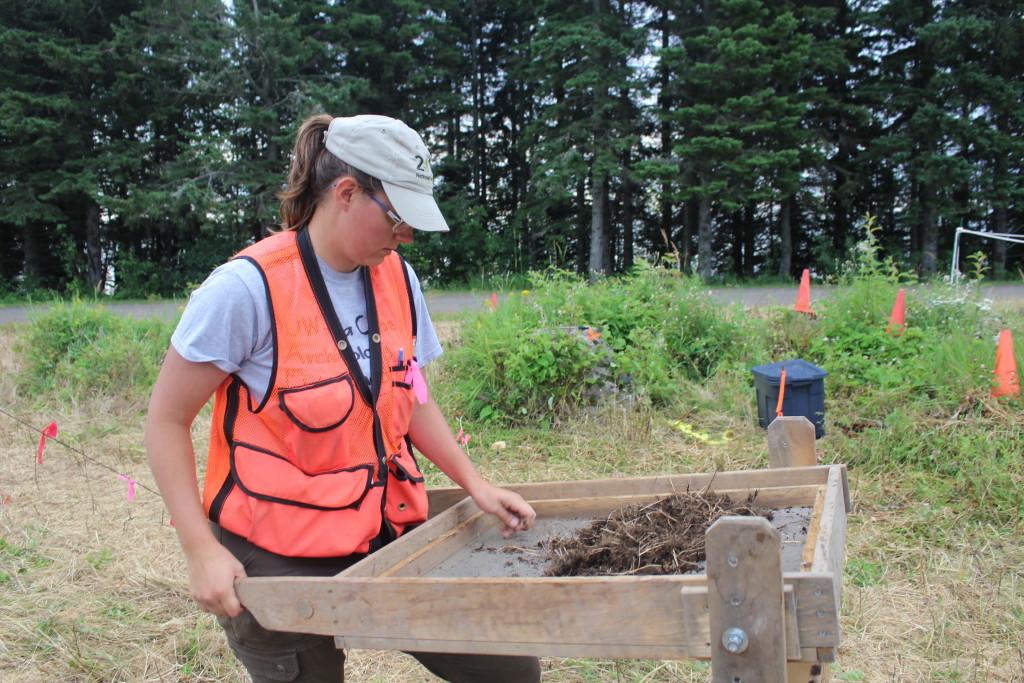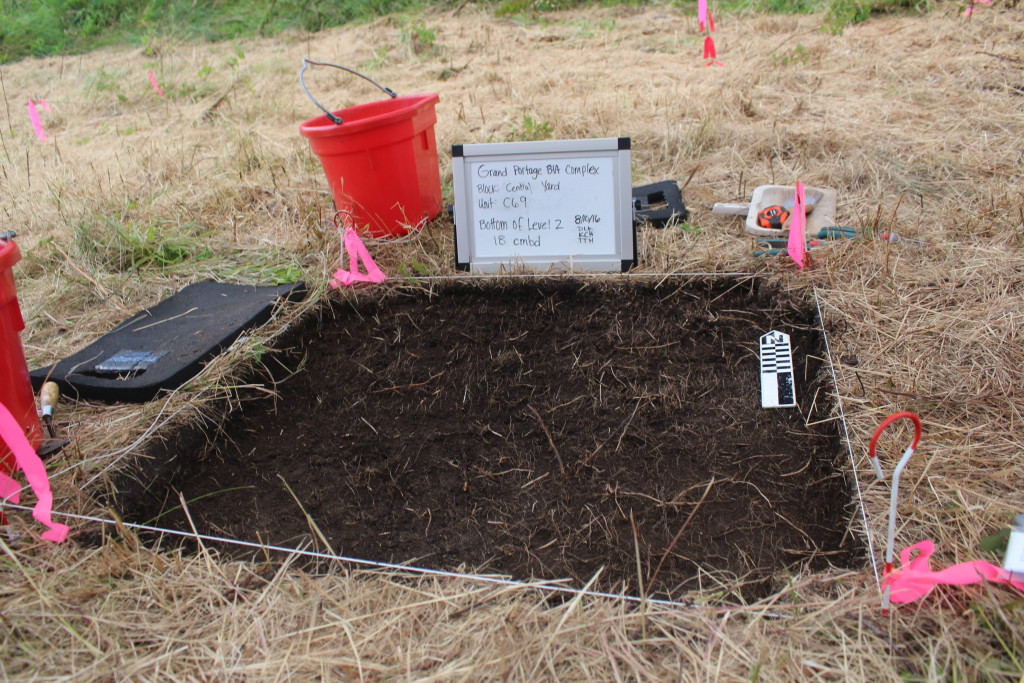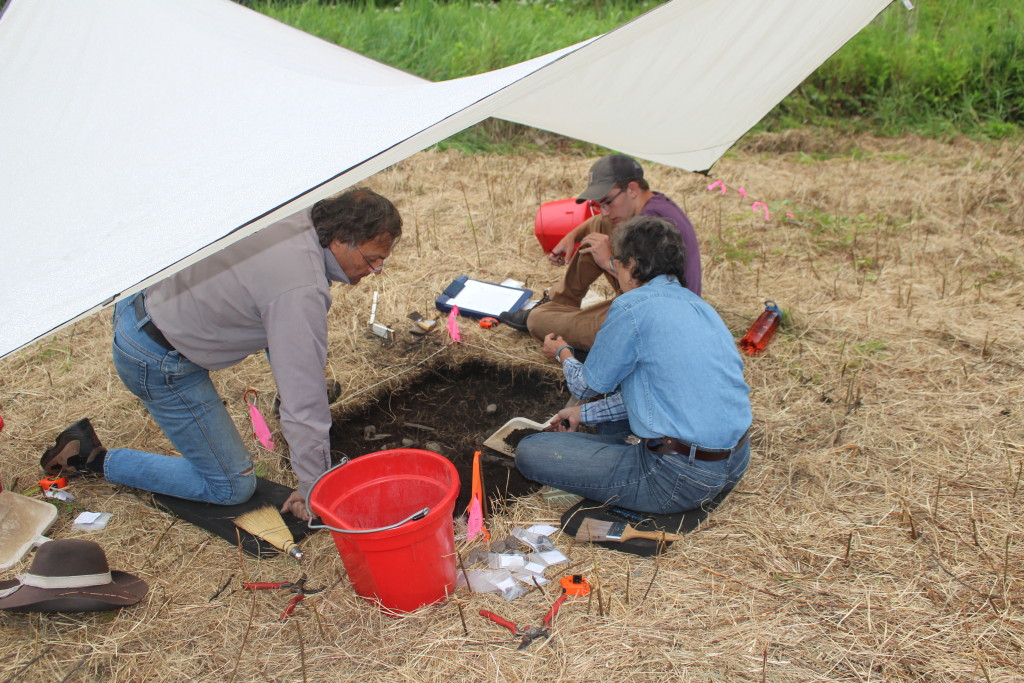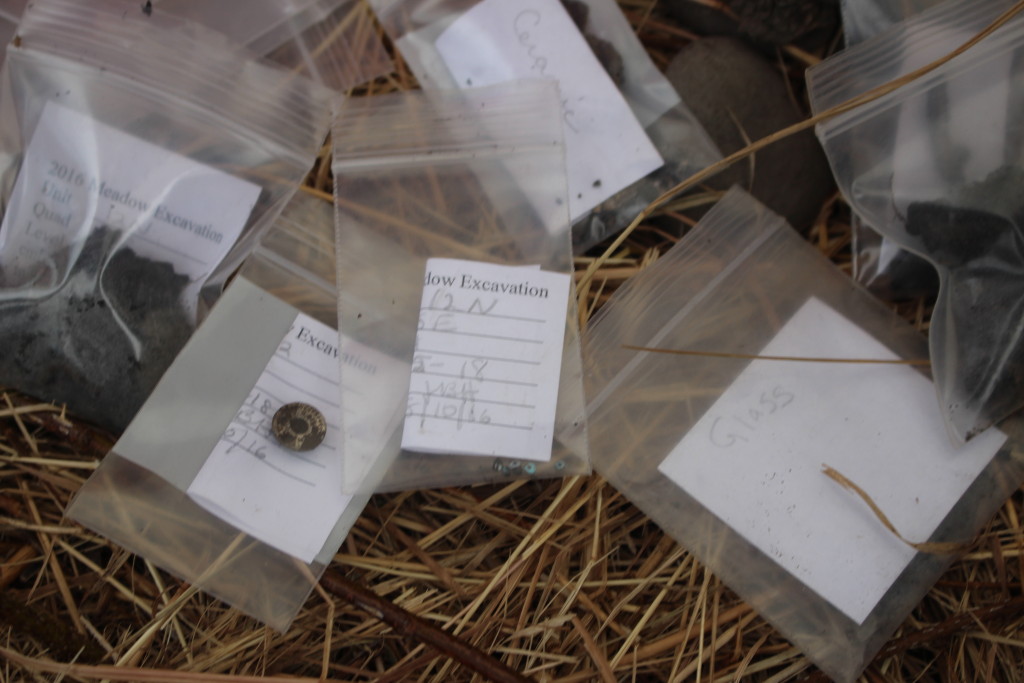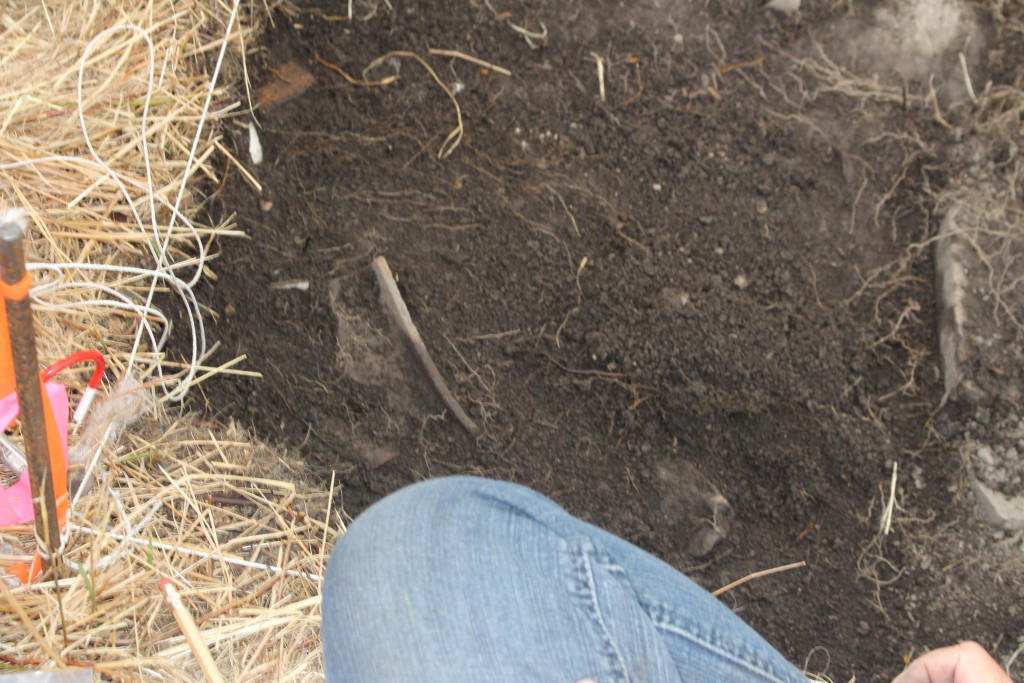Tom and I applied for a winter 2017 position in Arizona and found out that applicants for the job were being ranked using a checklist. Tom and I scored pretty high on the checklist except for one exception: we didn’t have any experience with archaeology. Here at Grand Portage we have an opportunity to change that. Not only is there a Ranger who is an archaeologist, he has had three interns this summer doing archaeology research. One is an undergraduate, one is a master’s candidate, and another is a doctoral student.
This week Tom and I took the opportunity to help with the dig for the master’s candidate, Danielle. Danielle wants to be a Cultural Resource Archaeologist, which means that she would work for a firm and her job would be to survey spots where roads are going to be built or improved or new buildings are going to be built, to make sure that there isn’t anything of archaeological significance. Her archaeology research for her master’s thesis includes excavating an old home site here at Grand Portage. She is interested in what this plot of land will say about usage of the site from 1830 until 1950, when the Grand Portage Tribe was managed by the Bureau of Indian Affairs.
Tom and I headed down to the dig first thing on a rainy morning. Fortunately there were tarps set up that protected the area where we were digging. The tarps also provided shade when it was hot and sunny this last week. Danielle had us grab buckets with archaeology tools (pointed trowel, brush, pruning shears, and dustpan) and head for one of the digging spots. Earlier she had set up a grid over the whole field. Then she selected random sample spots and that’s where we were digging.
Each sample spot is a one meter square divided into four quadrants. We used a little line level to measure the depth of our square. We started at a depth of 15 cm and worked the ground until all of it was that deep and level. That was Level 1. Then we dug down another 3 cm until the ground was level and we were at a depth of 18 cm. That was Level 2. We dug down 3 more cm to be at a depth of 21 cm and that is where we stopped for the day. Each time we reached the bottom of a level, we took a picture.
We scraped dirt more than dug, because you don’t want to take off too much soil at a time. If you just dig down 3 cm, you might destroy an artifact. Despite digging (scraping) 6 cm, I didn’t find anything except roots in my quadrant. Tom had a better quadrant and found some interesting things: a piece of cut wood, some nails, and a tapered roller bearing. He wanted to explore some larger metal pieces that he found the edges of, but they were out of our square. Another square (not the one we were working on) yielded more objects: glass beads, a part of a cast iron pot, a levi button, a perfume bottle. It will be Danielle’s job to put these things together and explain their meaning in her thesis.
Digging was hard work and, after a few hours, we moved on to some other things we needed to do on our day off. But we were glad to have the experience and we hope to help dig again before we leave Grand Portage.

